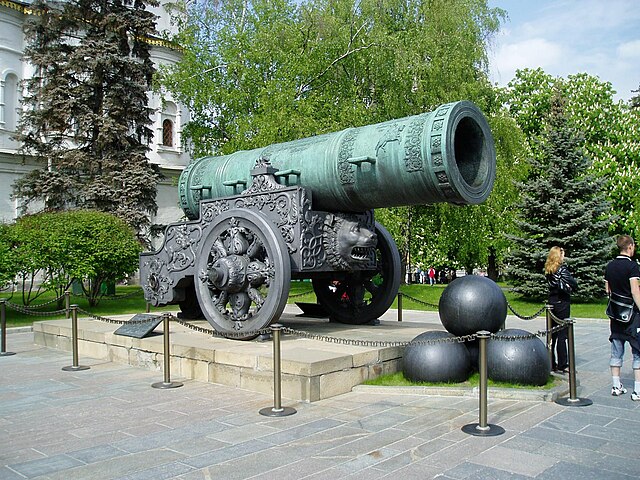The bombard is a type of cannon or mortar which was used throughout the Middle Ages and the early modern period. Bombards were mainly large calibre, muzzle-loading artillery pieces used during sieges to shoot round stone projectiles at the walls of enemy fortifications, enabling troops to break in. Most bombards were made of iron and used gunpowder to launch the projectiles. There are many examples of bombards, including Mons Meg, the Dardanelles Gun, and the handheld bombard.
Bombard mortar and granite ball projectile of the Knights of Saint John of Jerusalem, Rhodes, 1480–1500. Founded at the request of Pierre d'Aubusson, the bombard was used for close defense of the walls (100–200 m (110–220 yd)) at the Siege of Rhodes. It fired 260 kg (570 lb) granite balls. The bombard weighs about 3,325 kg (7,330 lb). Musée de l'Armée.
Handgun loophole at the Westgate, Canterbury
The Dardanelles Gun.
Mons Meg at Edinburgh Castle, mid-15th century
The formal definition of large-calibre artillery used by the United Nations Register of Conventional Arms (UNROCA) is "guns, howitzers, artillery pieces, combining the characteristics of a gun, howitzer, mortar, or rocket, capable of engaging surface targets by delivering primarily indirect fire, with a calibre of 76.2 mm (3.00 in) and above". This definition, shared by the Arms Trade Treaty and the Treaty on Conventional Armed Forces in Europe, is updated from an earlier definition in United Nations General Assembly Resolution 46/36L, which set a threshold of 100 mm (3.9 in). Several grammatical changes were made to that latter in 1992 and the threshold was lowered in 2003 to yield the current definition, as endorsed by UN General Assembly Resolution 58/54.
Adolf Gun, a Nazi German cross-channel firing gun
Flemish Dulle Griet
Austrian Pumhart von Steyr
Russian Tsar Cannon








